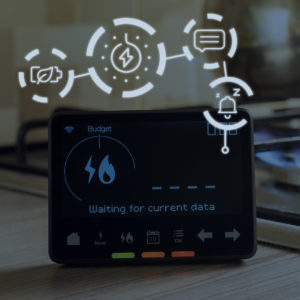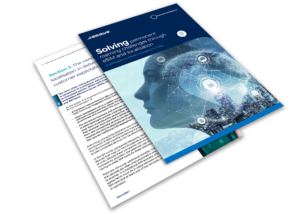IoT Explained
26 May 2021
Reading Time: 8 mins
IoT Explained
26 May 2021
Reading Time: 8 mins

Paul Marshall
Founder & CCO
LinkedIneDRX (extended Discontinuous Reception) and PSM (Power Saving Mode) are power-saving technologies used in LPWA IoT devices. They help extend battery life by reducing the frequency and duration of network connections, making them ideal for energy-efficient IoT applications.
A major challenge for businesses wanting to deploy battery-powered IoT edge devices is knowing how long the batteries will last. A business case built on a predicted device lifetime of 10 years will soon collapse under the weight of dead devices if it turns out the batteries are only good for five years. Replacing batteries in thousands of low-cost devices is unlikely to be financially viable – and maybe completely impossible if the devices are inaccessible.

Many IoT deployments have similar characteristics: battery-powered devices at the edge periodically sending small amounts of data to a central system and sometimes receiving data back. Typical requirements for bandwidth and response time are fairly low in both directions. In such cases, the cellular standards for Low Power Wide Area (LPWA) devices – LTE-M and NB-IoT – can be a good connectivity solution. These networks are designed to be power efficient while also offering the key cellular advantages of reliability and coverage.
Nevertheless, registering with a network, transferring data, switching cells when devices move and transmitting from inaccessible locations or across wide areas all require some power. And even small amounts of power can – cumulatively – have a considerable impact on battery life. So, it’s critical to consider additional ways for IoT devices to reduce their energy requirements.
The LPWA cellular standards provide two key power reduction features: eDRX (extended Discontinuous Reception) and PSM (Power Saving Mode). The features can be used by themselves or in combination, depending on the requirements and use cases of the devices. They can make a big difference to the amount of power that a device requires, but it’s not completely straightforward.
And if you rely on roaming for full coverage, you will have major challenges to overcome.
When a device registers with a network, it can operate in idle mode unless it needs to open a data session to send or receive data. The network uses a paging process to track the device and deliver information, such as notifications of pending data for the device or a change of system information. The device needs to listen for notifications and send tracking information at regular intervals – a process that can rapidly drain a battery.
One solution is to let devices sleep for as long as possible, waking up periodically to report to the network and check if there’s any pending data for them. A device expends a much smaller amount of energy waking and responding to a pending data indication than it would if it had to stay awake all the time.

The extended Discontinuous Reception (eDRX) feature is an extension to a mechanism that’s generally available on LTE networks. Discontinuous Reception (DRX) enables devices to stop listening and sleep for short periods of time (1-2 seconds). This works well for smartphones as users shouldn’t experience any noticeable degradation in service if, for example, there’s a short delay before their phone rings for an incoming call.
Many IoT devices need more than this to preserve battery life. For devices that don’t need to send data frequently or respond quickly to incoming messages, sleeping longer is a good way to achieve this.
eDRX provides a number of defined sleep periods to extend the possible sleeping time to over 40 minutes for LTE-M and nearly 3 hours for NB-IoT. Devices can request the sleep period that best meets their use case requirements. This enables developers to balance the responsiveness of the device with the need to save battery power. Devices can also change the sleep period over time if the balance between responsiveness and saving power changes.
A device is not reachable while it’s in an eDRX cycle – any data sent to the device is not delivered until the device wakes up. By sleeping lightly and only making a full network connection if there’s data waiting, a device can keep its waking time to around one millisecond if it doesn’t need to transfer data. It uses between 10-30 microamps of power when sleeping.
With the right configuration, a device can also turn off the SIM (UICC or eUICC) to conserve even more energy. Learn more about how to design euicc-compliant battery-powered devices.

Power Saving Mode (PSM) is a feature that lets IoT devices sleep longer and deeper than with eDRX.
When a device enters PSM, it stops listening to the network for an agreed period of time, up to a maximum of approximately 413 days. As long as the device wakes up during or at the end of this time period, it doesn’t need to do a full reattach to the network. Although registering only takes a small amount of energy, the total consumption from registering over the lifetime of a device can have a considerable impact on battery life.
During PSM, a device only uses a few microamps of power – less than the 10-30 microamps required during eDRX sleep. However, it takes longer for a device to wake from PSM mode and it has to be active for longer – around 100-200 milliseconds – while it receives and transmits control messages with the network before it can receive data.
A device in PSM can wake before the end of the sleep period if required. For example, if the device detects that it needs to raise an alarm, it can wake the radio module and send a message straight away without waiting for the PSM timer to expire or needing to reattach to the network.

The amount of power a device needs depends on a wide range of factors, including the application it’s running, the environment, location, and mobility requirements. Selecting the right power-saving features and sleep periods requires detailed calculations and a balancing act between how responsive a device needs to be, how critical it is to save battery life, and how it operates within the IoT ecosystem.
eDRX is the better option for devices that need to be reasonably responsive, for example, asset tracking, smart grid, monitoring systems, and trackers. The eDRX cycle (or sleep period) needs to be fine-tuned depending on the use case. For example, tracking devices for critical assets need to be much more responsive than a tracker attached to a pet, for which a delay of several seconds or even minutes might be acceptable.
PSM is a good choice for IoT devices that can be unresponsive for longer, as it uses even less power than eDRX. For example, devices that transmit data that isn’t time-critical, such as a soil sensor or smart meter, could (like a teenager) sleep for most of the day.
In general, eDRX is considered suitable if there’s tolerance between five seconds and six hours for delivering data to a device. For longer tolerances, PSM is often the better option.
Using one or both eDRX and PSM to conserve energy in battery-powered IoT edge devices sounds like a no-brainer. But there are pitfalls for the unwary.

Not all operators provide support for eDRX and PSM on their LPWA networks. Even if you use a supplier that does offer them, you need to watch out: 80% of roaming agreements don’t support these features for roaming devices according to Kaleido Intelligence in a new research report. If you rely on roaming to provide full coverage for your deployment and need to guarantee that your devices can use these power-saving features, your range of network options becomes severely limited and your estate may experience significant service downtime and costs.
Devices need to request a sleep period from the network when they want to use a power-saving feature. But operators can differ in how they respond to these requests. Some accept the full range in the standard, while others might only support a subset of these and force your devices to use a different period to the one you’ve requested.
If your devices connect to different networks over their lifetimes, they might have to adjust to not using the power saving features or using different sleep periods to the ones you calculated would provide the energy savings required for your business case.
If your devices are mobile, power savings can be significantly reduced if devices need to use a different mast, channel, or band when they wake and need to reconnect to the network.
Similarly, if a device can roam, it may need to register with a different network when it reconnects, which means all network connection settings must change and the expected power savings will be lost.
Using timing-sensitive protocols and applications in your deployment can cause issues. For example:
While a device is sleeping, the network can’t deliver data to it. If data arrives for a device before it wakes, some networks buffer the data, but others discard it – possibly without informing the sender.
Those that buffer data may only do so for a short time, or only store a small amount, discarding the oldest data if new data arrives when the buffer is full. If the protocol between the device and the central system doesn’t detect and remedy lost data, this could cause issues for the system.
There are no shortcuts or easy options for ensuring the batteries in your IoT edge devices will last for as long as the business case requires. There are complex energy calculations to make, options to weigh, and decisions to take.
On the positive side, the cellular LPWA standards acknowledge and have started to address the issues, technology developments will provide ever-increasing energy-saving opportunities, and the experience of cutting edge projects will feedback to help the IoT deployments of the future.
If you rely on roaming to achieve full connectivity for your devices (or might do one day), the most valuable step you can take is to choose a connectivity solution – like Eseye’s AnyNet solution – that can localize your devices wherever they are in the world.
Together, eSIM technology and the eUICC standard can enable advanced network switching that ensures your devices connect to local networks as much as possible wherever they are. That way you don’t need to worry about the restrictions that roaming imposes on the LPWA power-saving features. And that lets you avoid those costly truck rolls to replace batteries in dead devices.
For companies today looking to develop and build an edge IoT business case, it’s critical to work with experienced partners. Hardware designers, application developers, and connectivity specialists need to work together to ensure that devices will work successfully and efficiently within the cellular ecosystem. Leaving you the time and headspace to focus on ensuring that your IoT venture delivers the benefits and vision of your business case.

Paul Marshall
Founder & CCO
LinkedInPaul is one of Eseye’s co-founders. With a background in senior design engineering, Paul’s focus is on ensuring his development, operations and support teams deliver solutions that work faultlessly in the field.
Paul was co-founder of CompXs, with Ian Marsden, and developed the world’s first IEEE 802.15.4 radio. Before CompXs, Paul was in senior radio design at Philips.